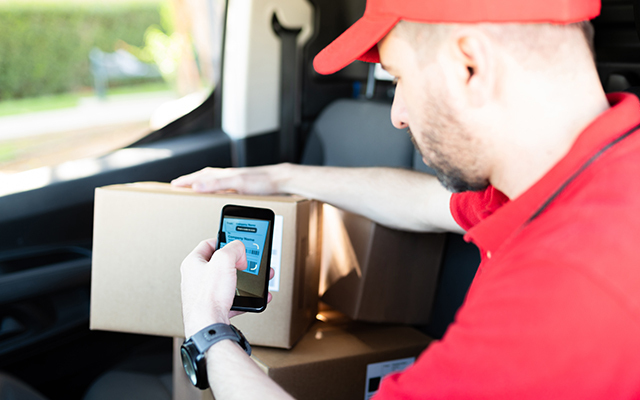Over-the-air (OTA) describes the ability to download applications, services and configurations across a cellular or wireless network. In the context of Internet of Things (IoT) applications, OTA enables you to communicate, update, reconfigure and manage devices including the SIMs embedded within those devices, without having to physically access them.
Here’s a closer look at how OTA works, and the benefits it can bring to your IoT projects.
What is OTA?
OTA enables you to update or reconfigure a device remotely. For businesses with IoT devices in play, OTA has two main uses: firmware updates and SIM profile management.
Firmware updates
Firmware refers to the software within a device that instructs or enables it to perform the functions for which it was created. In other words, firmware tells your device what to do. Over time, you might want to add new improvements or functions to those devices; something that requires the firmware to be altered. You will also need to optimise the code from time to time to address bugs and security vulnerabilities. OTA enables you to do this remotely via the cellular network, without having to recall the devices.
SIM management
A SIM (subscriber identity module) contains the credentials a device needs to connect to a cellular network, and for the network to authenticate that device.
Basic OTA capabilities allow you to provision (i.e. activate and manage) SIM profiles remotely and to update the parameters of the SIM as required. Newer OTA technologies go several steps further. They make it possible to load and manage multiple profiles onto a single SIM, making it much easier to switch between networks.

OTA technologies

OTA provisioning with a standard SIM
For a traditional IoT removable SIM, OTA provisioning can be carried out using A2P SMS (Application-to-Person Short Message Service). This enables an operator to update the SIM via an SMS message and works even when the device is not online. OTA updates can also be carried out via Hypertext Transfer Protocol (HTTP), which enables the SIM to access the update via a central server.
These OTA methods allow a provider to activate a new SIM, suspend connections, integrate the SIM with other carriers and add new functions (e.g. updated security measures).
OTA provisioning with eUICC
A traditional IoT SIM can usually contain just a single mobile network operator profile. It’s usually possible to activate and execute changes to that SIM via OTA provisioning. However, if you ever want to switch operators, you need to physically replace the SIM.
eUICC (Embedded Universal Integrated Circuit Card) is a type of software that enables a SIM to host multiple profiles. Using a remote SIM provisioning (subscription management) platform, you can add, remove and manage these profiles over the air. eUICC is often referred to as eSIM. You can find out more about eUICC technology here.
OTA provisioning with a Multi-IMSI SIM
The IMSI (international Mobile Subscriber Identifier) is a unique string of 14-15 digits that forms part of the SIM profile. When an IoT device attempts to access a network, it transmits the IMSI. The network operator uses this information to authenticate the device.
Multi-IMSI technology enables more than one subscriber identifier to be stored on a single SIM, which makes it easier for businesses to switch between carriers as needed. OTA provisioning enables new IMSIs to be added remotely without having to physically access the device.

Is OTA right for your IoT deployment?

In a range of industrial, commercial and consumer-based IoT applications, devices can be difficult or expensive to access or recall once deployed. OTA provisioning is incredibly useful, precisely because it avoids the disruption and cost overheads of having to physically access the SIM.
The best fit OTA technology depends both on your specific usage requirements, as well the level of control you want to exercise over your current and future connectivity options.
Multi-IMSI and eUICC technologies are similar in that they both rely on OTA to enable you to make use of multiple networks on a single SIM. However, multi-IMSI cards are almost always proprietary: in other words, your original provider keeps ultimate control over which networks you can connect with.
For static or local IoT deployments, a multi-IMSI card can give you a backup option in the event of an outage. For applications such as dashcams and asset trackers, multi-IMSI enables you to connect directly with local providers in different regions. Ultimately though, your choice of secondary networks may be limited by the preferences of your primary provider.
With eUICC by contrast, the SIM can host multiple different profiles, not just IMSIs. So as well as making it possible to swap between providers to meet your operational needs, if you ever need to switch contracts completely to a new primary provider, you have the freedom to do it via OTA provisioning.
Likewise, you might plan to launch multiple devices across a range of geographic areas. eUICC makes it possible to equip each device with the same ‘initial’ SIM profile (i.e. a bootstrap) at the device production stage. You can then add your alternative profiles using OTA, depending on the markets those devices will ultimately be deployed in.
For more information on the best way to remotely manage your IoT assets, take a look at the and the Wireless Logic SIMPro platform.

Find out more
For an expert assessment of your connectivity needs and to discover the best fit M2M options for your business, speak to Wireless Logic today.
Learn more about our connectivity solutions for a wide range of use cases here.